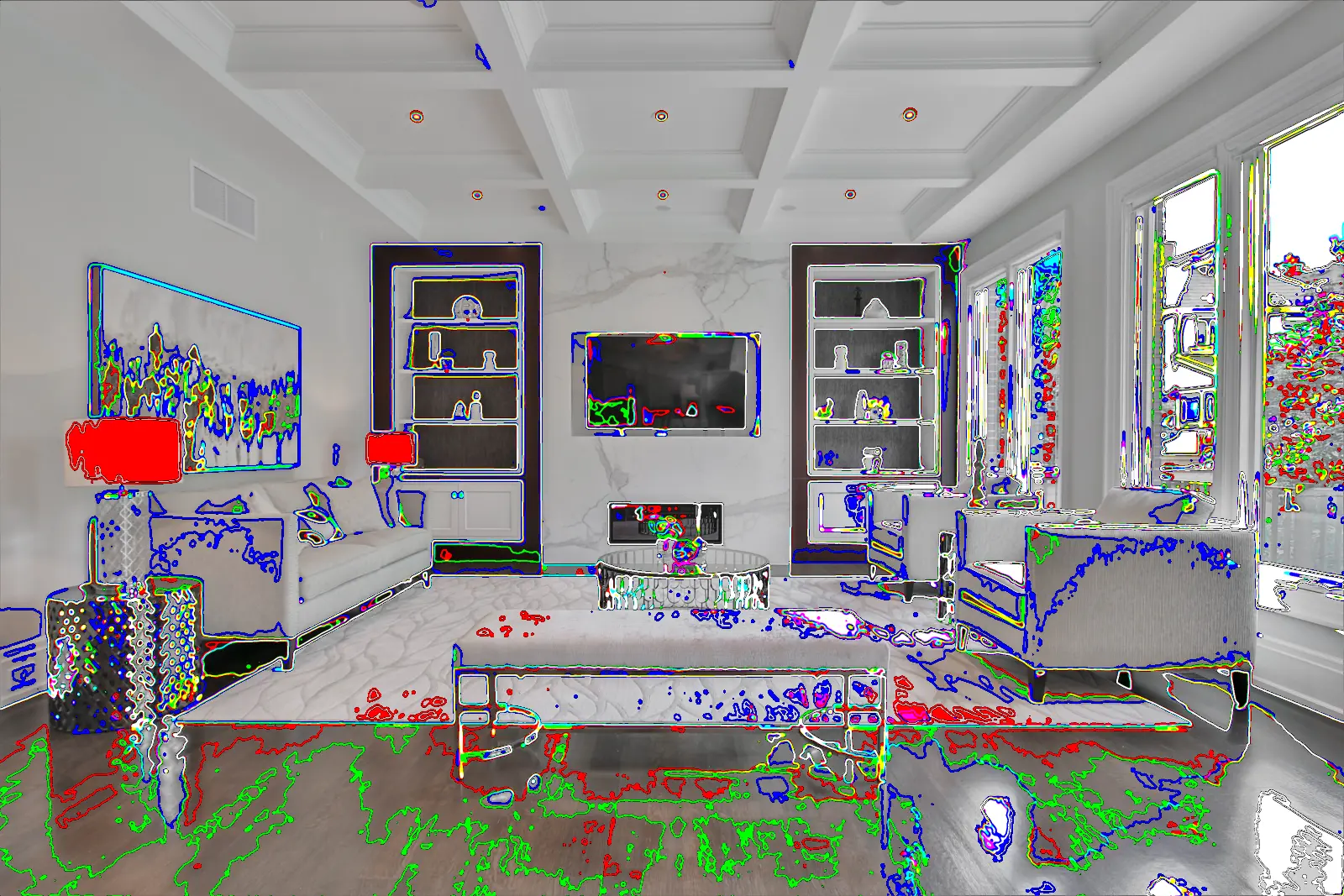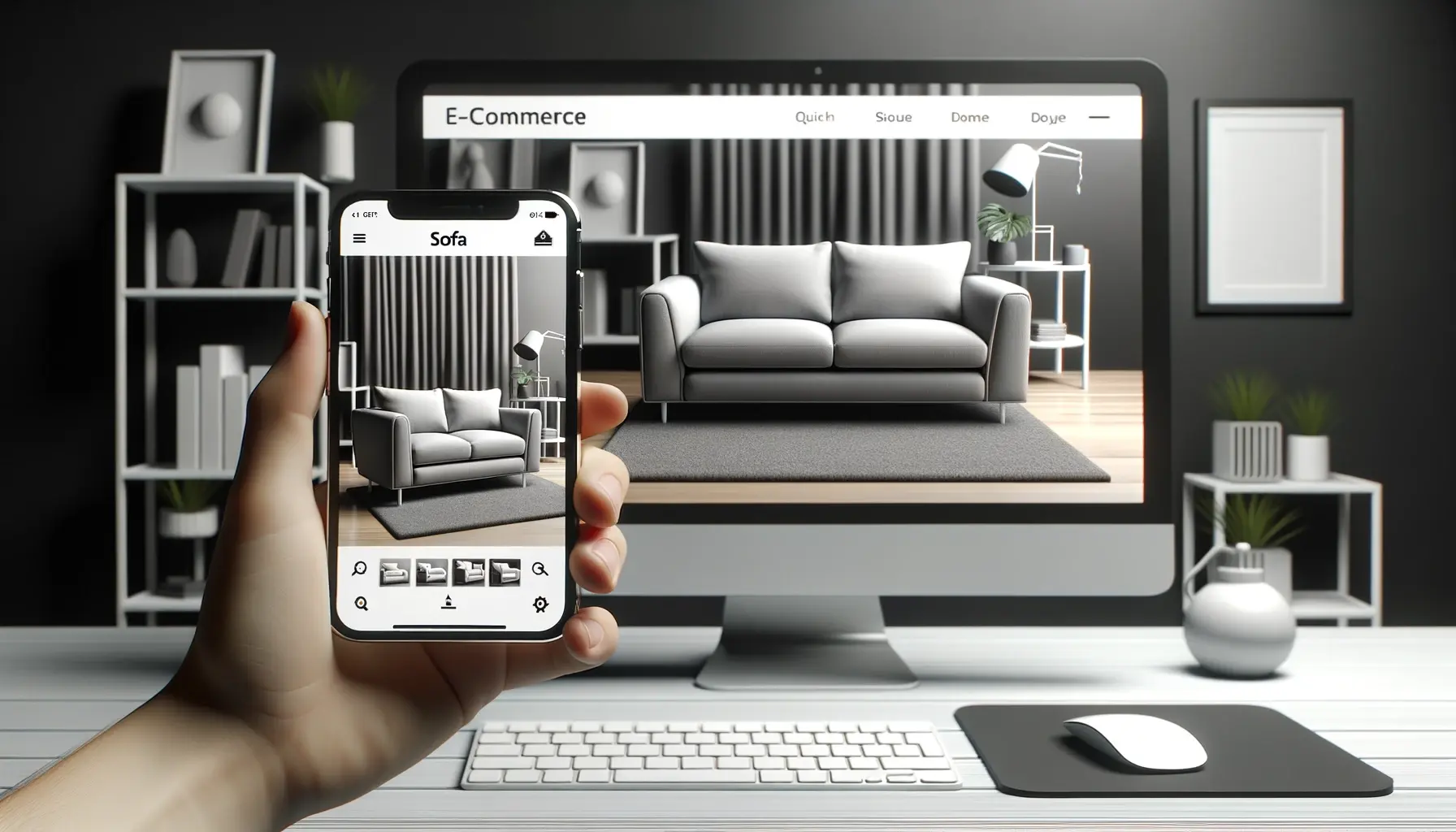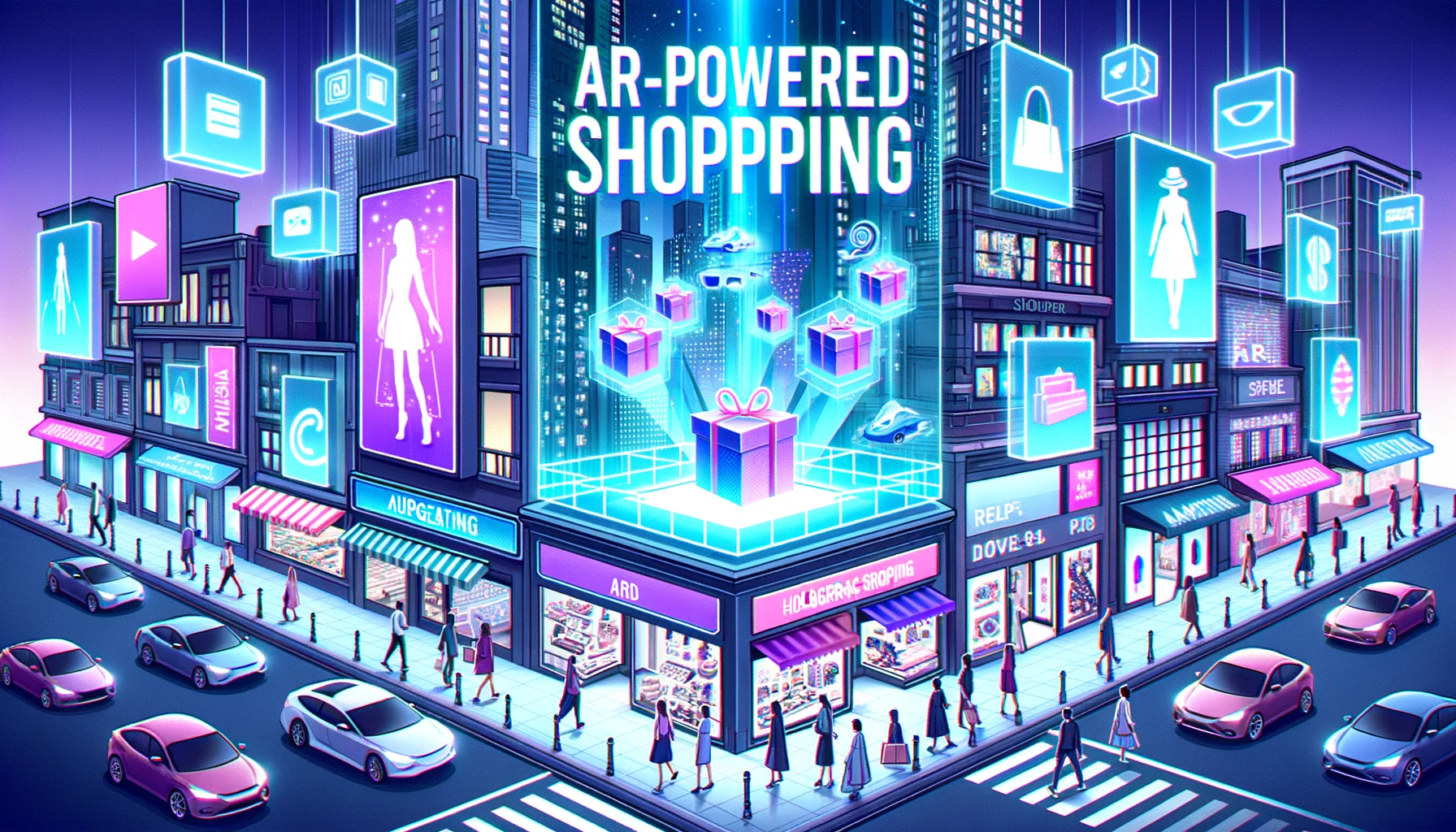The retail landscape is undergoing a seismic shift, with Augmented Reality (AR) at the epicentre of this transformation, especially within the furniture sector. By transcending the barriers between the digital and physical worlds, AR is redefining the way consumers interact with products and make purchasing decisions.
How AR Works Its Magic
At the heart of AR is a blend of real-time image processing, user interface elements, and 3D rendering. AR systems superimpose digital content onto the physical world through a user’s camera-enabled device. Technologies such as SLAM (Simultaneous Localisation and Mapping) work in tandem with gyroscopes and accelerometers to accurately position virtual furniture in your living room, creating the illusion that it’s truly there. As of 2021, the AR market in retail is estimated to grow by approximately 47% from 2020 to 2027, showing its expanding trajectory (Source: Global Industry Analysts, Inc.).

Case Studies: Pioneers of AR in Retail
Ikea’s ‘Place’ App
Background: Recognizing the potential to ease the furniture buying process, Ikea launched the ‘Place’ app in 2017, leveraging Apple’s ARKit technology.
Implementation: The ‘Place’ app allows users to select from Ikea’s vast catalogue and place life-sized, 3D models of furniture items in their actual space using the camera on their smartphones or tablets. The app measures the size of the products against the room dimensions with astonishing accuracy, ensuring that the scale is as close to real-life as possible.
Results: Ikea reported that users of the app had a much higher engagement rate, spending an average of more than 8 minutes in the app and placing at least 2.3 furniture items in their homes. This high engagement rate demonstrates the app’s effectiveness in capturing consumer interest (Source: Inter Ikea Systems B.V.).
Wayfair’s ‘View in Room 3D’

Background: Wayfair, an e-commerce giant specializing in home goods, recognized the challenge customers faced when trying to imagine furniture in their homes solely based on online images.
Implementation: They launched ‘View in Room 3D’ within their mobile app, an AR feature that allows users to virtually place multiple 3D models in their room, complete with the ability to relocate and rotate to fit the space accordingly.
Results: Post-launch, Wayfair witnessed a surge in user engagement revealing that customers who utilized ‘View in Room 3D’ were more likely to make a purchase with a 3-fold increase in conversion rates and a significantly lower return rate compared to those who did not use the feature (Source: Wayfair Inc.).
By analyzing these case studies, it’s clear that the immersive nature of AR technology in retail offers benefits that go beyond novelty. It directly appeals to consumers’ desire for assurance and personalization, while also providing measurable business benefits such as increased engagement, higher conversion rates, and reduced returns.
The economic impact of integrating AR into retail strategy cannot be overstated. With enhanced visualisation, customers can make more informed purchasing decisions, leading to fewer product returns and increased overall satisfaction. As more retailers adopt AR, we can expect these success stories to become the norm rather than exceptions, making AR a cornerstone of digital innovation in retail.
The integration of AR into the furniture retail sector is not just a temporary trend but a forward-looking approach that aligns with the evolving consumer preferences for a more interactive and reassuring shopping experience. By leveraging the expertise of specialists like ElevationX Studios in 3D and AR model production, furniture brands can significantly enhance their online presence, improve customer satisfaction, and drive sales on platforms like Amazon, Shopify, WooCommerce, Squarespace, Magento, WixStores, OpenCart, and beyond. This technological advancement offers a win-win solution by providing a more immersive shopping experience for customers while enabling brands to stand out in a competitive marketplace.
The adoption of AR and 3D modelling technologies represents a pivotal moment in the furniture retail industry, addressing many of its longstanding challenges. By enabling customers to visualise products in their own space with great accuracy and realism, these technologies can significantly reduce the uncertainty and hesitation that often accompanies online furniture shopping. This section explores the broader implications and future directions of incorporating AR into the furniture retail ecosystem.
Additional Examples of AR in Retail
Anthropologie’s AR Shopping Experience
Overview: Fashion and home furnishings retailer Anthropologie introduced an AR feature in their app that allows customers to visualize furniture pieces in their existing space while also offering the option to change the color and fabric on select items.
Impact: The app improvement led to increased user immersion and customization, which in turn fostered greater customer satisfaction and loyalty.
Lowe’s AR Implementation
Overview: Home improvement chain Lowe’s introduced an AR-based application called “View in Your Space” that helps customers see how appliances, tools, and furniture would look like in their actual living spaces.
Outcomes: The tool aimed to help Lowe’s customers make more informed decisions, reduce uncertainty, and thus reduce the likelihood of returns. Anecdotal feedback indicates that customers who used the AR tool had higher satisfaction rates.
By analyzing these case studies, it’s clear that the immersive nature of AR technology in retail offers benefits that go beyond novelty. It directly appeals to consumers’ desire for assurance and personalization, while also providing measurable business benefits such as increased engagement, higher conversion rates, and reduced returns.
The economic impact of integrating AR into retail strategy cannot be overstated. With enhanced visualization, customers can make more informed purchasing decisions, leading to fewer product returns and increased overall satisfaction. As more retailers adopt AR, we can expect these success stories to become the norm rather than exceptions, making AR a cornerstone of digital innovation in retail.
The Psychology Behind AR Shopping

AR shopping experiences cater directly to important psychological concepts that influence consumer behavior in profound ways. Key among these are the reductions in cognitive dissonance, the enhancement of the sensory experience, and the solidification of purchase intention through virtual ownership. Let’s delve into each of these concepts:
Reducing Cognitive Dissonance
The traditional furniture purchasing process often exposes consumers to cognitive dissonance—an inner conflict they might experience when they make a decision that involves compromise or has the potential for regret.
- Visualization: With AR, consumers don’t just imagine but see how a new piece of furniture fits in with their current decor, minimizing the risk of dissonance that comes from uncertainty.
- Accessibility: AR makes it easier to try out multiple options, thereby reducing the anxiety of making a wrong choice.
Enhancing Sensory Experience
While AR currently hinges on the visual aspect of the shopping experience, it engages other senses implicitly by providing a sense of scale, texture, and fit that shoppers can ‘feel’ within the context of their own space.
- Playfulness: AR adds an element of fun to furniture shopping, making it more of a creative and enjoyable experience, thus driving positive emotional responses.
- Realism: Through realistic visualization, consumers can almost feel the textures and materials, contributing to a multisensory shopping experience that bolsters confidence.
Encouraging Ownership and Purchase Intention
The concept of psychological ownership—that feeling that something is “yours”—can be heightened through AR.
- Trial Ownership: When consumers visually place furniture in their space, they begin to develop a sense of ownership over the product before buying.
- Anticipated Regret: The ‘try before you buy’ model lowers anticipated regret, as consumers make more informed purchases.
Social Validation and Sharing
AR also taps into the social aspect of consumer psychology.
- Sharing Possibility: Consumers can share their AR experiences or ‘setups’ on social media for feedback, driving social validation before the actual purchase.
- Peer Engagement: Engaging with peers through AR can validate choices and reduce purchase anxiety.
The Novelty Factor
The novelty of AR shopping experiences can generate excitement and interest, which can:
- Draw Attention: Novelty attracts users’ interest and may increase the time spent engaging with products.
- Lead to Buzz Creation: First-time AR experiences can lead to word-of-mouth marketing, amplifying interest in the retail brand.
In summary, AR shopping is much more than a technological wonder—it resonates on a deeper psychological level with consumers. It reduces uncertainty, enhances the sense of ownership, brings enjoyment to the decision-making process, and facilitates social interaction around shopping. As retailers continue to explore and refine AR capabilities, the alignment with these psychological benefits will likely become more pronounced, solidifying AR’s place as a transformative force in consumer retail psychology.
Economic and Environmental Prospects

Reducing Returns
The use of AR in the furniture industry has the potential to drastically reduce return rates, which are not only costly for retailers but also have a significant environmental impact due to the logistics involved. By providing customers with a clearer understanding of what they are purchasing, AR can help ensure that the product meets their expectations, thus reducing the need for returns.
Technological Advancements Paving the Way
The continuous improvement in AR technology, powered by advancements in AI, cloud computing, and mobile technology, promises even more immersive and realistic experiences. The rollout of 5G networks is expected to further enhance the performance of AR applications, offering smoother and more responsive interactions.
Market Analysis and Future Trends
A deeper look into the AR market reveals that by 2028 it’s expected to reach a valuation of around £161.1 billion globally. This includes significant contributions from furniture retail, as well-positioned companies leverage AR to enhance online shopping experiences (Source: Statista).
A Comparative Look at Traditional vs AR Retail
An Immersive Experience Without the Need for Physical Inventory
The Traditional Model
Traditionally, to provide a diverse array of choices to customers, retailers must maintain a vast and varied physical inventory. This approach is fraught with challenges including storage costs, inventory depreciation, and the risk of unsold stock due to changing consumer tastes.
AR Transformation
AR sidesteps these challenges by digitizing the entire catalogue. With AR:
- Customers can virtually ‘place’ an extensive range of furniture in their space.
- Retailers can showcase their entire catalogue without the need for physical samples.
- New designs can be tested in the market without physically producing them.
This vastly reduces the overhead associated with physical inventory while still providing customers with a wide selection.
24/7 Shopping Convenience
The Traditional Model
Physical stores have fixed operating hours. Customers need to plan their visit, adhere to store timings, and may often feel rushed to make a decision before closing time.
AR Transformation
With AR:
- The store is essentially always open, allowing customers to shop at their leisure, whether it’s midnight or dawn.
- There is no waiting in line, no closing times, and no pressure from sales staff.
- Consumers can experiment with furniture selections in their own time and space, leading to more thoughtful purchases.
A Sustainable Framework for Testing Various Furniture Options, with No Physical Waste
The Traditional Model
In a conventional retail setting, testing out different furniture entails the production of physical prototypes, many of which may never be sold or seen by the customer. This can lead to material waste and contributes negatively to the retailer’s carbon footprint.

AR Transformation
AR offers a greener option:
- There is no need to produce physical prototypes for every design iteration, significantly reducing material waste.
- Retailers can gauge customer interest in virtual models before committing to production runs.
- It supports a more sustainable retail ecosystem with less resource consumption and lower production emissions.
This sustainable model not only resonates with eco-conscious consumers but also aligns with broader environmental objectives of reducing waste and conserving resources. The integration of AR into retail could represent a significant step forward in the industry’s contribution to sustainability and responsible consumerism.
By adopting AR, furniture retailers can offer a high-tech shopping experience that is not only more convenient and versatile for the customer but also more sustainable and cost-effective. A win-win in the evolving retail landscape.
The Detailed Guide: Implementing AR in Your Furniture Store
To leverage AR effectively, retailers should consider the following steps:
| Step | Description |
|---|---|
| 1. Product Selection | Identify which products in your catalogue would benefit most from AR visualization. |
| 2. 3D Modelling | Collaborate with experts to create accurate 3D models of your products. Agencies like ElevationX Studios can provide high-quality modelling services tailored to your needs.. |
| 3. Platform Integration | Opt for an eCommerce platform that supports AR to ensure a seamless user experience. |
| 4. User Testing | Conduct user testing to refine the AR experience, making it as intuitive and helpful as possible. |
| 5. Marketing | Promote your AR features through targeted marketing efforts to educate and attract customers to your online store. |
Leading the Charge: More Real-Life Successes
Immersive shopping apps by brands such as Anthropologie and L’Oreal show that AR can transcend categories, hinting at future integrations across diverse sectors, tuned precisely to each one’s peculiar needs.
Exploring the Future of AR in Furniture Retail
As we look to the future, we anticipate a more widespread adoption of AR, driven by consumer demand for personalised, flexible shopping experiences. AR could soon extend beyond visualisation to include sensory experiences that mimic the touch and feel of different fabrics and materials.
Why ElevationX Studios Should Be Your Go-To
At ElevationX Studios, we specialize in 3D & AR model production, tailored to boost sales performance for brands on platforms like Amazon and Shopify. Our cutting-edge solutions cater to the unique demands of the furniture retail industry.
| Service | Description |
|---|---|
| 3D Product Modeling | Detailed and accurate digital twins of your products. |
| AR Integration | Immersive, real-time AR experiences for your online store. |
| Interactive 3D Viewer | Explore our products with a free online 3D viewer. |
| Portfolio Showcase | Witness our expertise through our curated portfolio. |
| Transparent Pricing | Choose from competitive pricing options that suit your needs. |
The Future of Furniture Shopping
The integration of AR into furniture retail is more than an emerging trend; it’s a fundamental shift towards a more interactive, engaging, and satisfactory shopping experience. This technology not only caters to the current demand for better online shopping solutions but also positions brands for future growth as consumer behaviours and expectations continue to evolve.
As the industry moves forward, the role of specialized agencies like ElevationX Studios becomes increasingly crucial. Their expertise in 3D and AR model production is vital for brands looking to adopt these technologies effectively, ensuring that the digital transformation of the furniture retail sector is both successful and sustainable.
In conclusion, the incorporation of AR and 3D modelling into the furniture retail landscape offers a promising path forward, addressing key challenges while opening up new opportunities for innovation, customer engagement, and environmental sustainability. As this technology continues to evolve and become more accessible, its adoption is set to redefine the standards of online shopping, making it more immersive, informative, and enjoyable for consumers worldwide.
For more insights, read “A Glimpse Into the Future: How AR is Revolutionizing Online Shopping.” Embracing this technology ensures you stay ahead in the competitive retail landscape.
FAQs
For any inquiries or clarifications, our comprehensive FAQ page is available.


